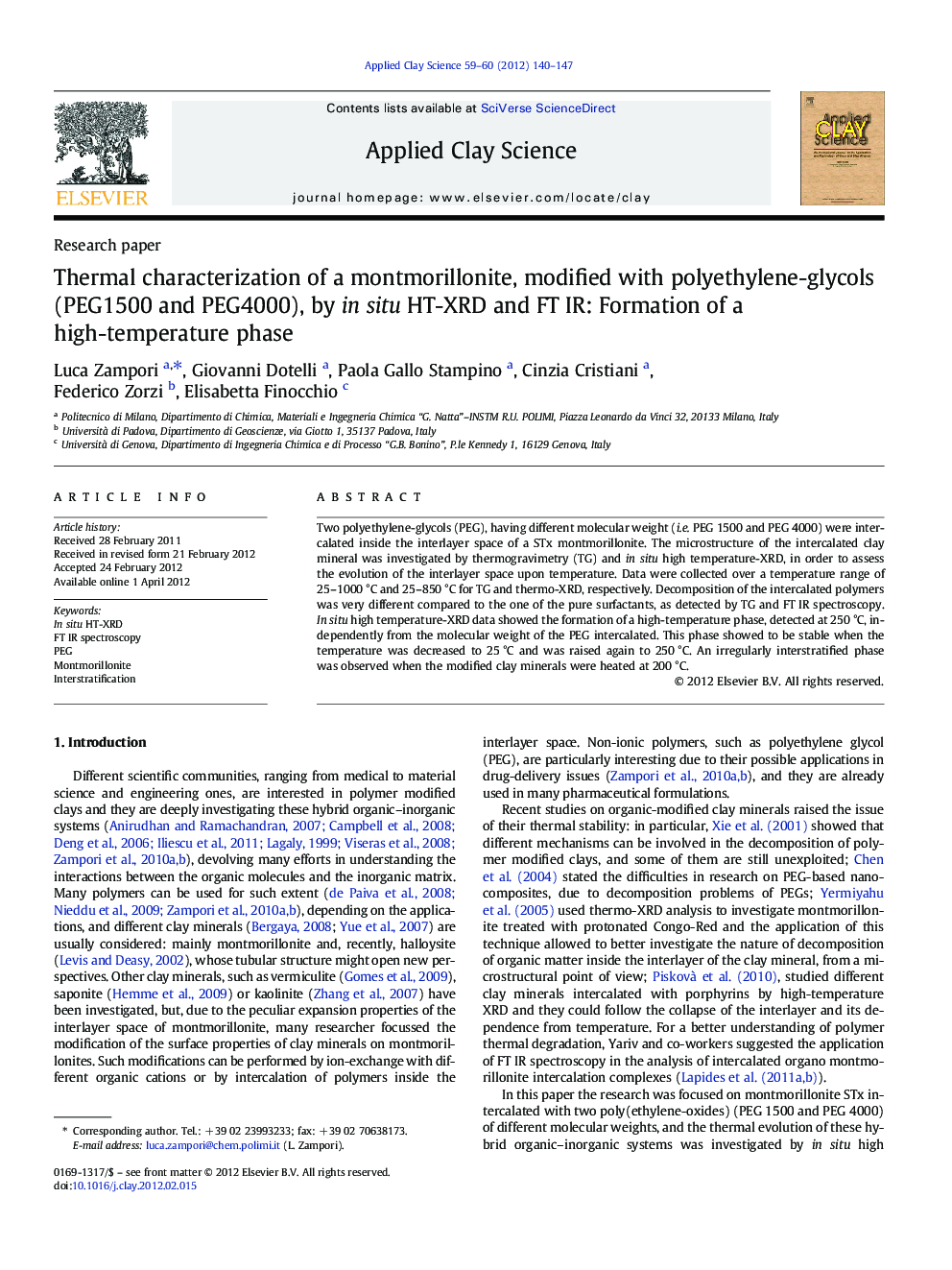| Article ID | Journal | Published Year | Pages | File Type |
|---|---|---|---|---|
| 1695290 | Applied Clay Science | 2012 | 8 Pages |
Two polyethylene-glycols (PEG), having different molecular weight (i.e. PEG 1500 and PEG 4000) were intercalated inside the interlayer space of a STx montmorillonite. The microstructure of the intercalated clay mineral was investigated by thermogravimetry (TG) and in situ high temperature-XRD, in order to assess the evolution of the interlayer space upon temperature. Data were collected over a temperature range of 25–1000 °C and 25–850 °C for TG and thermo-XRD, respectively. Decomposition of the intercalated polymers was very different compared to the one of the pure surfactants, as detected by TG and FT IR spectroscopy. In situ high temperature-XRD data showed the formation of a high-temperature phase, detected at 250 °C, independently from the molecular weight of the PEG intercalated. This phase showed to be stable when the temperature was decreased to 25 °C and was raised again to 250 °C. An irregularly interstratified phase was observed when the modified clay minerals were heated at 200 °C.
► In-situ investigation of thermal behavior of PEG-intercalated montmorillonites. ► Detection of a high-temperature phase, formed after degradation of PEG. ► Formation of an interstratified polymer-modified montmorillonite.
